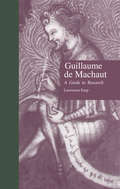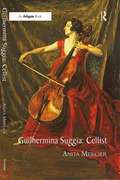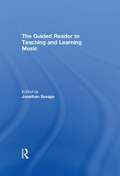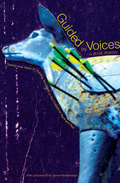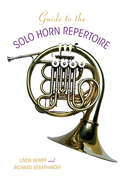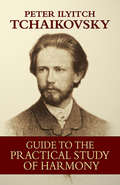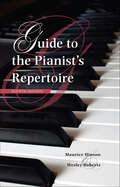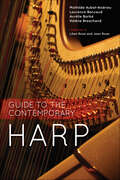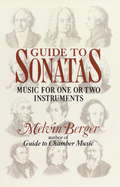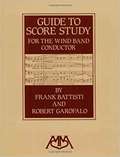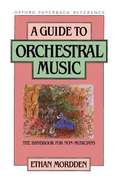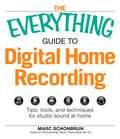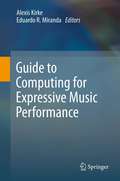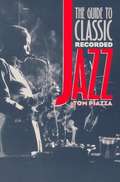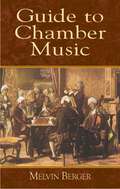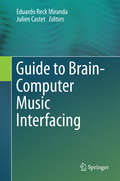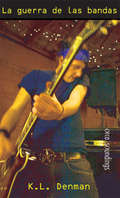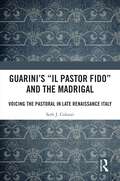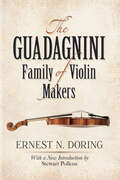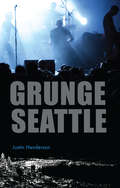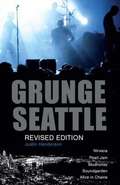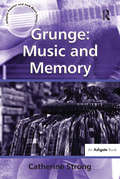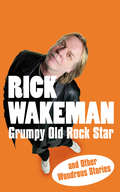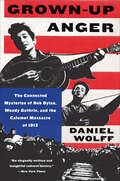- Table View
- List View
Guillaume de Machaut: A Guide to Research (Composer Resource Manuals Ser. #Vol. 36.)
by Lawrence EarpThis book provides an overview of the current state of research on Machaut, the major figure of 14th-century French music and poetry, giving fair representation to the many areas of Machaut research that are pursued in fields outside music.Coverage of the current state of knowledge on each of the manuscripts includes the newly discovered Aberystwyth manuscript, described in detail here for the first time. A section on the large narrative poems pulls together recent research of several scholars and offers new views. An up-to-date concordance of the miniatures in all of the illustrated Machaut manuscripts gives information on where published studies and facsimiles may be found. The discography is the most complete list of Machaut recordings yet compiled and provides critical evaluations of recordings most valuable for instruction, according to our latest conception of performance practice in the 14th-century.A biography section organizes the documentary material in a way that will facilitate further research. The bibliography of secondary works cites books, editions, articles, and dissertations (including forthcoming works) from 1740 to 1991, in French, English, the other western European languages, Polish, Russian, and Japanese. The volume is fully indexed.
Guilhermina Suggia: Cellist
by Anita MercierBorn in 1885 in Porto, Portugal, to a middle-class musical family, Guilhermina Suggia began playing cello at the age of five. A child prodigy, she was already a seasoned performer when she won a scholarship to study with Julius Klengel in Leipzig at the age of sixteen. Suggia lived in Paris with fellow cellist Pablo Casals for several years before World War I, in a professional and personal partnership that was as stormy as it was unconventional. When they separated Suggia moved to London, where she built a spectacularly successful solo career. Suggia's virtuosity and musicianship, along with the magnificent style and stage presence famously captured in Augustus John's portrait, made her one of the most sought-after concert artists of her day. In 1927 she married Dr Jos asimiro Carteado Mena and settled down to a comfortable life divided between Portugal and England. Throughout the 1930s, Suggia remained one of the most respected musicians in Europe. She partnered on stage with many famous instrumentalists and conductors and completed numerous BBC broadcasts. The war years kept her at home in Portugal, where she focused on teaching, but she returned to England directly after the war and resumed performing. When Suggia died in 1950, her will provided for the establishment of several scholarship funds for young cellists, including England's prestigious Suggia Gift. Mercier's study of Suggia's letters and other writings reveal an intelligent, warm and generous character; an artist who was enormously dedicated, knowledgeable and self-disciplined. Suggia was one of the first women to make a career of playing the cello at a time when prejudice against women playing this traditionally 'masculine' instrument was still strong. A role model for many other musicians, she was herself a fearless pioneer.
The Guided Reader to Teaching and Learning Music
by Jonathan SavageThe Guided Reader to Teaching and Learning Music draws on extracts from the published work of some of the most influential education writers to provide insight, guidance and clarity about key issues affecting Music teachers. The book brings together key extracts from classic and contemporary writing and contextualises these in both theoretical and practical terms. The extracts are accompanied by a summary of the key ideas and issues raised, questions to promote discussion and reflective practice, and annotated further reading lists to extend thinking. Taking a thematic approach and including a short introduction to each theme, the chapters cover: ? Analysing your own work as a music teacher; Concepts of musicality; Notions of musical development and progression; Pedagogies for teaching music musically; Music inside and outside the school; Formal, informal and non-formal approaches to music education; Productive methods of assessment and transition for music education; Creativity and music education; Supporting the gifted and talented in music; Using ICT within music education. ? Aimed at trainee and newly qualified teachers including those working towards Masters-level qualifications, as well practicing teachers, this accessible, but critically provocative text will be an essential resource for all teachers that wish to deepen their understanding of Music Education.
Guided by Voices: A Brief History
by James GreerThe true story of the fourth-grade teacher in Dayton, Ohio, who created one of the most influential bands of our times. Devoted fans have followed Guided by Voices for decades—and critics around the world have lauded the band’s brain trust, Robert Pollard, as a once-in-a-generation artist. Pollard has been compared by the New York Times to Mozart, Rossini, and Paul McCartney (in the same sentence) and everyone from P. J. Harvey, Radiohead, R.E.M., the Strokes, and U2 has sung his praises and cited his music as an influence. But it all started rather prosaically when Pollard, a fourth-grade teacher in his early thirties, began recording songs with drinking buddies in his basement. In this book, James Greer, an acclaimed music writer and former Spin editor—who also played in the band for two years—provides unparalleled insight and complete access to the workings of Pollard’s muse.
Guide to the Solo Horn Repertoire
by Linda Dempf Richard SeraphinoffThis comprehensive, annotated resource of solo repertoire for the horn documents in detail the rich catalogue of original solo compositions for the instrument. Intended as a guide for practical use and easy reference, it is organized into three large sections: works for unaccompanied horn, works for horn and keyboard, and works for horn and ensemble. Each entry includes publisher information, a brief description of the form and character of a work, technical details of the horn writing, and information on dedication and premiere. The authors also include commentary on the various techniques required and the performance challenges of each piece. Representing over ten years of careful compilation and notation by an expert in horn performance and pedagogy, and by a seasoned music librarian and natural horn performer, Guide to the Solo Horn Repertoire will be an invaluable resource for performers, educators, and composers.
Guide to the Practical Study of Harmony (Dover Books on Music)
by Peter Ilyitch TchaikovskyWritten during Tchaikovsky’s years as professor at the renowned Moscow Conservatory, this volume presents a clear and thorough introduction to the study of harmony. The great Russian composer expounded upon his views of music while he was in the full flower of his creative powers, offering students a chance to learn the discipline’s fundamentals from one of its great masters. Out of print for decades and exceedingly rare in its original edition, Tchaikovsky’s Guide to the Practical Study of Harmony possesses an intrinsic historical interest, yet remains as useful and instructive today as it was a century ago. A complete course in writing music, this excellent manual features numerous examples and exercises. It functions equally well as a classroom text, an adjunct to private instruction, or as a guide to individual musicians.
Guide to the Pianist's Repertoire (Indiana Repertoire Guides)
by Maurice Hinson Wesley RobertsGuide to the Pianist's Repertoire continues to be the go-to source for piano performers, teachers, and students. Newly updated and expanded with more than 250 new composers, this incomparable resource expertly guides readers to solo piano literature and provides answers to common questions: What did a given composer write? What interesting work have I never heard of? How difficult is it? What are its special musical features? How can I reach the publisher? New to the fourth edition are enhanced indexes identifying black composers, women composers, and compositions for piano with live or recorded electronics; a thorough listing of anthologies and collections organized by time period and nationality, now including collections from Africa and Slovakia; and expanded entries to account for new material, works, and resources that have become available since the third edition, including websites and electronic resources. The "newest Hinson" will be an indispensible guide for many years to come.
Guide to the Contemporary Harp
by Mathilde Aubat-Andrieu Laurence Bancaud Aurélie Barbé Hélène BreschandHarps and harp music have enjoyed a renaissance over the past century and today can be heard in a broad array of musical contexts. Guide to the Contemporary Harp is a comprehensive resource that examines the vibrant present-day landscape of the harp. The authors explore the instrument from all angles, beginning with organology; moving through composition, notation, and playing techniques; and concluding with the contemporary repertoire for the harp. The rapid diversification in these areas of harp performance is the result of both technological innovations in harp making, which have produced the electric harp and MIDI harp, and innovative composers and players. These new instruments and techniques have broadened the concept of what is possible and what constitutes harp music for today. Guide to the Contemporary Harp is an essential guide for any harpist looking to push the instrument and its music to new heights.
Guide to Sonatas
by Melvin BergerWith the same authority, insight, and unique ability to bring music to life on the printed page that he brought to his Guide to Chamber Music, Melvin Berger gives us an indispensable guide to the sonata form. Comprehensive, analytical, and historical, including descriptions in nontechnical language of over two hundred of the best best-known sonatas, Guide to Sonatas is designed to help all music lovers--casual listeners, experienced concertgoers, performers, conductors, or teachers--deepen their understanding and enhance their enjoyment of the classical repertoire.
Guide to Score Study for the Wind Band Conductor
by Frank Battisti Robert GarofaloThis outstanding "one-of-a-kind" text was designed to assist the conductor in achieving a personal interpretation of music.
A Guide to Orchestral Music
by Ethan MorddenRelaxed and accessible in style, this authoritative guide is the first symphony handbook for non-musicians. The book begins with a general introduction to the symphony and short pieces on the orchestra and musical styles. Mordden goes on to describe, chronologically, over 700 pieces--from Vivaldi to twentieth-century composers. Further aids to the reader include two lists of repertory builders and a glossary of musical terms. "Easy and pleasurable to read...a genuinely useful guide for the music lover who has not had a musical education but loves concert music."--John Barkham Reviews
Guide to Digital Home Recording: Tips, Tools, and Techniques for Studio Sound at Home (The Everything )
by Marc SchonbrunLeona Lewis, Lily Allen, and Colbie Caillat all became famous after their self-produced music was posted on the Internet. And now anyone who’s ever practiced in front of the mirror for hours wants to try it too. This guide shows aspiring musicians how to turn their computers into a music studio.Professional musician Marc Schonbrun leads you step-by-step through the basics of home recording, including:Tips on how to make—and stick to—a recording budgetThe best digital recording softwareMicrophones, mixers, and electronic hardwareRecording for individual instruments and virtual instrumentsMixing, mastering, and advanced recording techniquesFor a fraction of the cost of recording, you can become their own engineers. You’ll learn to create tracks complete with digital effects, virtual instruments, and sound quality that rival professional studios. In no time, you’ll be ready for your time in the spotlight!
Guide to Computing for Expressive Music Performance
by Eduardo R. Miranda Alexis KirkeThis book discusses all aspects of computing for expressive performance, from the history of CSEMPs to the very latest research, in addition to discussing the fundamental ideas, and key issues and directions for future research. Topics and features: includes review questions at the end of each chapter; presents a survey of systems for real-time interactive control of automatic expressive music performance, including simulated conducting systems; examines two systems in detail, YQX and IMAP, each providing an example of a very different approach; introduces techniques for synthesizing expressive non-piano performances; addresses the challenges found in polyphonic music expression, from a statistical modelling point of view; discusses the automated analysis of musical structure, and the evaluation of CSEMPs; describes the emerging field of embodied expressive musical performance, devoted to building robots that can expressively perform music with traditional instruments.
The Guide to Classic Recorded Jazz
by Tom PiazzaFrom the book's back cover: "Here is a brilliant and deeply informed overview of jazz history, one which gives a rich sense of who the major figures were and how they fit in with one another while showing the reader what to listen for and which recordings are indispensable for a full experience of the music. No other book fuses a singular examination of the key recordings with a presentation of the entire sweep of the music's classic period to provide the listener with such a useful and spirited companion." - WYNTON MARSALIS Tom Piazza writes about jazz and other American music for the New York Times, Atlantic Monthly, Playboy, New Republic, and Village Voice. He is a former professional jazz pianist and a graduate of Williams College and the Iowa Writers' Workshop; his short fiction has appeared in a number of literary magazines.
Guide to Chamber Music
by Melvin BergerAuthoritative, beautifully written guide presents 231 of the most frequently performed pieces of chamber music by 55 composers. For each, the author gives a brief biography, followed by discussions of the individual compositions -- both their historical and musical contexts and their salient features, including formal organization, content, and any extramusical associations. "No lover of chamber music should be without this Guide." -- John Barkham Reviews. Preface. Glossary.
Guide to Brain-Computer Music Interfacing
by Eduardo Reck Miranda Julien CastetThis book presents a world-class collection of Brain-Computer Music Interfacing (BCMI) tools. The text focuses on how these tools enable the extraction of meaningful control information from brain signals, and discusses how to design effective generative music techniques that respond to this information. Features: reviews important techniques for hands-free interaction with computers, including event-related potentials with P300 waves; explores questions of semiotic brain-computer interfacing (BCI), and the use of machine learning to dig into relationships among music and emotions; offers tutorials on signal extraction, brain electric fields, passive BCI, and applications for genetic algorithms, along with historical surveys; describes how BCMI research advocates the importance of better scientific understanding of the brain for its potential impact on musical creativity; presents broad coverage of this emerging, interdisciplinary area, from hard-core EEG analysis to practical musical applications.
La guerra de las bandas: (Battle of the Bands) (Spanish Soundings)
by K. L. DenmanJay, Kelvin and Cia are The Lunar Ticks, a dedicated band, convinced they are on their way to the top. They hope to win an upcoming battle of the bands where the first prize is a full day in a recording studio. Going up against Indigo Daze, a band from another school, Jay finds himself falling for Rowan, the leader of the other band. When Rowan's guitar is trashed right before the contest, The Lunar Ticks are the prime suspects.
Guarini's 'Il pastor fido' and the Madrigal: Voicing the Pastoral in Late Renaissance Italy
by Seth J. ColuzziBattista Guarini’s pastoral tragicomedy Il pastor fido (1589) began its life as a play, but soon was transformed through numerous musical settings by prominent composers of the late sixteenth and early seventeenth centuries. Through the many lives of this work, this book explores what happens when a lover’s lament is transplanted from the theatrical stage to the courtly chamber, from speech to song, and from a single speaking character to an ensemble of singers, shedding new light on early modern literary and musical culture. From the play’s beginnings in manuscripts, private readings, and aborted stage productions in the 1580s and 1590s, through the gradual decline of Pastor fido madrigals in the 1640s, this book examines how this widely read yet controversial text became the center of a lasting and prolific music tradition. Using a new integrative system of musical-textual analysis based on sixteenth-century theory, Seth Coluzzi demonstrates how composers responded not only to the sentiments, imagery, and form of the play’s speeches, but also to subtler details of Guarini’s verse. Viewing the musical history of Guarini’s work as an integral part of the play’s roles in the domains of theater, literature, and criticism, this book brings a new perspective to the late Italian madrigal, the play, and early modern patronage and readership across a diverse geographical and temporal frame.
The Guadagnini Family of Violin Makers
by Ernest N. Doring Stewart PollensAlong with the instruments of Stradivari and del Gesù, the violins of Giovanni Battista Guadagnini have long been favored by professional musicians for their responsiveness, tonal quality, and projection. Originally published in 1949 in a very limited edition, this study remains the most comprehensive account of G. B. Guadagnini's work and the legacy carried on by his descendants.Author Ernest N. Doring conducted painstaking research into eighteenth-century documentation of Guadagnini's itinerant life. He traces the craftsman's progress from Piacenza, Milan, Cremona, and Parma to Turin, where Guadagnini created his most prized stringed instruments. A catalog of the family's masterpieces is organized by city and provides a detailed provenance for each instrument. A new Introduction by Stewart Pollens, a leading authority on musical instruments, offers historical perspectives. Widely available for the first time in an affordable edition, this rare and authoritative work provides violinists, musicologists, and music history enthusiasts with a fascinating resource.
Grunge Seattle
by Justin HendersonChronicling the intertwined lives of members of core grunge bands, Grunge Seattle reveals the origins and inspirations of the grunge movement. Delve into the collisions between personalities and egos, artists and corporations, suburbs and cities, obscurity and fame. Explore the cafés, apartments and studios where Nirvana, Pearl Jam, Soundgarden, Mudhoney and Alice in Chains practiced and played. In this reprint edition, originally published in 2010 and revised in 2016, writer, surfer and longtime Seattlite Justin Henderson provides a unique guide to the key locations in the story of grunge.
Grunge Seattle
by Justin HendersonDetailing the intertwined lives of members of core grunge bands, this thoroughly researched account reveals the origins and inspirations of the grunge music movement. Illustrating the dramatic and emotional tensions that arose between the various players, it describes the collisions between personalities and egos, artists and corporations, suburbs and cities, obscurity and fame. It is also a unique guide to the key locations in the grunge story, exploring the cafes, apartments, and studios where members of bands such as Nirvana, Pearl Jam, Soundgarden, Mudhoney, and Alice in Chains practiced and played.
Grunge: Seattle
by Justin HendersonChronicling the intertwined lives of members of core grunge bands, Justin Henderson reveals the origins and inspirations of the grunge music movement. Illustrating the dramatic and emotional tensions that arose between the various players, he describes the collisions between personalities and egos, artists and corporations, suburbs and cities, obscurity and fame. The book is also a unique guide to the key locations in the grunge story, exploring the cafes, apartments, and studios where members of Nirvana, Pearl Jam, Soundgarden, Mudhoney, and Alice in Chains practiced and played. A new chapter explores the continuing influence of Grunge on music today.
Grunge: Music And Memory (Ashgate Popular and Folk Music Series)
by Catherine StrongGrunge has been perceived as the music that defined 'Generation X'. Twenty years after the height of the movement there is still considerable interest in its rise and fall, and its main figures such as Kurt Cobain and Courtney Love. As a form of 'retro' music it is even experiencing a resurgence, and Cobain remains an icon to many young music fans today. But what was grunge, and what has it become? This book explores how grunge has been remembered by the fans that grew up with it, and asks how memory is both formed by and forms popular culture. It looks at the relationship between media, memory and music fans and demonstrates how different groups can use and shape memory as part of an ongoing struggle for power in society. Grunge was the site of such a struggle, as popular music so often is, with the young people of the time asking questions about their place in the world and the way society is organized. This book examines what these questions were, and what has happened to them over time. It shows that although grunge challenged many social structures, the way it, and youth itself, are remembered often work to reinforce the status quo.
Grumpy Old Rock Star: and Other Wondrous Stories
by Rick WakemanAround about August 1948, Mr and Mrs Cyril Wakeman had an early night and some time later, at Perivale in Middlesex, Mrs Wakeman produced a bonny baby son. They named him Richard, but he quickly became known as Rick. Rick was a likeable little fellow who had a talent for the piano and for making trouble. Music became Rick's life - he joined a popular music group called Yes and became a legend. Much later he became a Grumpy Old Man who appears on Countdown, hosts a hugely popular radio show on Planet Rock and performs a one-man show telling stories about his rather extraordinary life.Which is where this book you are holding comes in. Mr Wakeman is simply one of the great storytellers of our age - let's face it, he has some fabulous material. It seemed a shame that some of the funniest yarns should not be more widely known. So he accepted some cash and here we are.Curl up by the fire with a Grumpy Old Rock Star and your nearest and dearest. We defy you not to want to read it aloud and laugh.
Grown-Up Anger: The Connected Mysteries of Bob Dylan, Woody Guthrie, and the Calumet Massacre of 1913 T
by Daniel WolffA tour de force of storytelling years in the making: a dual biography of two of the greatest songwriters, Bob Dylan and Woody Guthrie, that is also a murder mystery and a history of labor relations and socialism, big business and greed in twentieth-century America—woven together in one epic saga that holds meaning for all working Americans today.When thirteen-year-old Daniel Wolff first heard Bob Dylan’s "Like a Rolling Stone," it ignited a life-long interest in understanding the rock poet’s anger. When he later discovered "Song to Woody," Dylan’s tribute to his hero, Woody Guthrie, Wolff believed he’d uncovered one source of Dylan’s rage. Sifting through Guthrie’s recordings, Wolff found "1913 Massacre"—a song which told the story of a union Christmas party during a strike in Calumet, Michigan, in 1913 that ended in horrific tragedy. Following the trail from Dylan to Guthrie to an event that claimed the lives of seventy-four men, women, and children a century ago, Wolff found himself tracing the history of an anger that has been passed down for decades. From America’s early industrialized days, an epic battle to determine the country’s direction has been waged, pitting bosses against workers and big business against the labor movement. In Guthrie’s eyes, the owners ultimately won; the 1913 Michigan tragedy was just one example of a larger lost history purposely distorted and buried in time. In this magnificent cultural study, Wolff braids three disparate strands—Calumet, Guthrie, and Dylan—together to create a devastating revisionist history of twentieth-century America. Grown-Up Anger chronicles the struggles between the haves and have-nots, the impact changing labor relations had on industrial America, and the way two musicians used their fury to illuminate economic injustice and inspire change.
